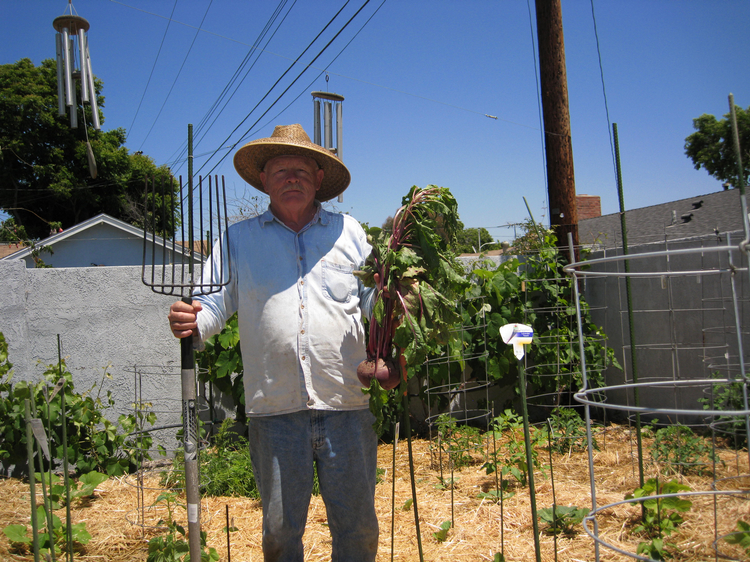The Garden May 2009

It was a battle to the death but Paul was able to surround them and pull them up!
Did you know? - A vegetable garden (also known as a vegetable patch or vegetable plot) is a garden that exists to grow vegetables and other plants useful for human consumption, in contrast to a flower garden that exists for aesthetic purposes. It is a small-scale form of vegetable growing. A vegetable garden typically includes a compost heap, and several plots or divided areas of land, intended to grow one or two types of plant in each plot. It is usually located to the rear of a property in the back garden or back yard. Many families have home kitchen and vegetable gardens that they use to produce food. In World War II, many people had a garden called a 'victory garden' which provided food to families and thus freed up resources for the war effort.
With worsening economic conditions and increased interest in organic and sustainable living, many people are turning to vegetable gardening as a supplement to their family's diet. We do it for fun and exercise plus we KNOW what we are eating! Food grown in the back yard consumes little if any fuel for shipping or contenttenance, and the grower can be sure of what exactly was used to grow it. Organic horticulture, or organic gardening, has become increasingly popular for the modern home gardener.
There are many types of vegetable gardens. The potager, a garden in which vegetables, herbs and flowers are grown together, has become more popular than the more traditional rows or block.
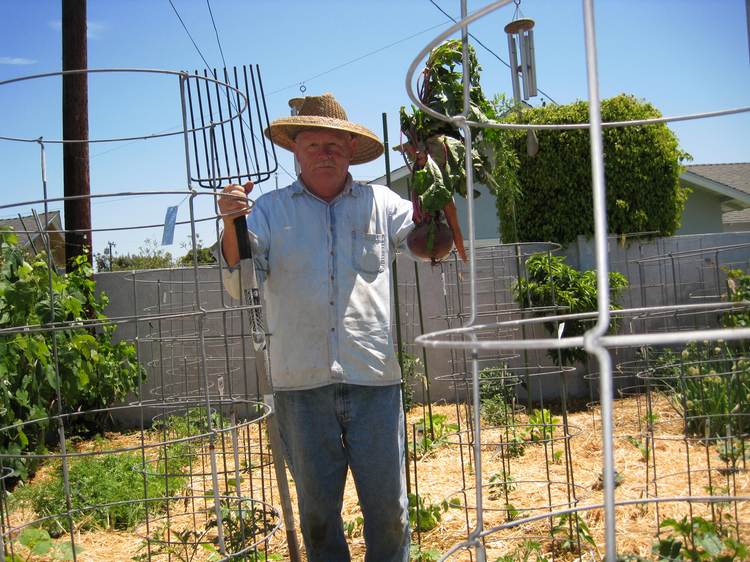
This is what a REAL gardener looks like!
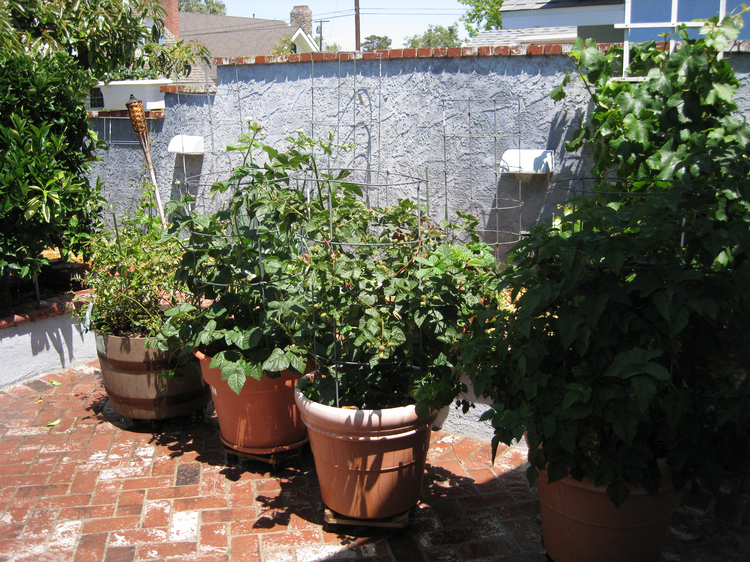
Berries in pots along the front yard wall
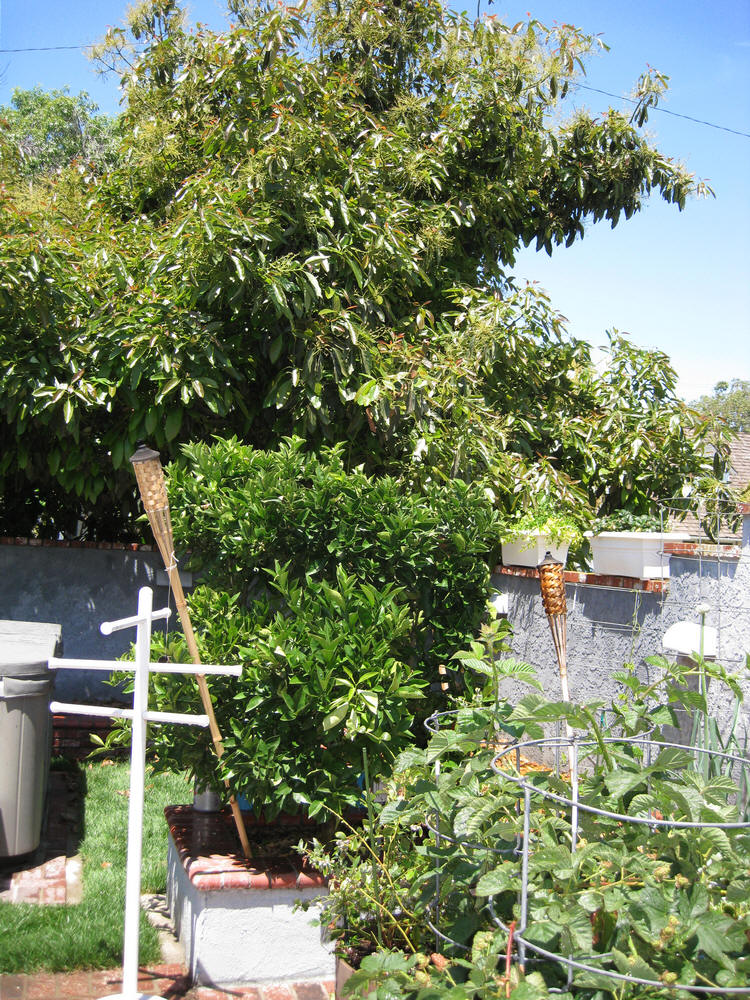
The avocado tree is going wild!
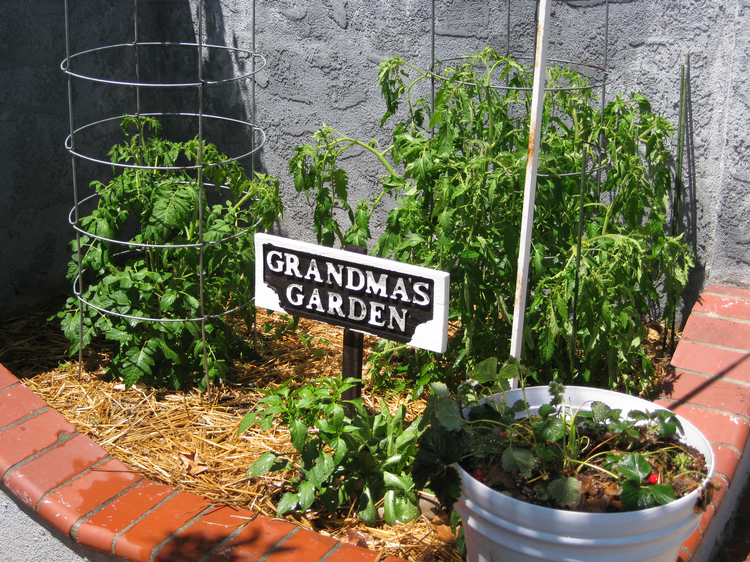
We have 30+ different kinds of tomatos
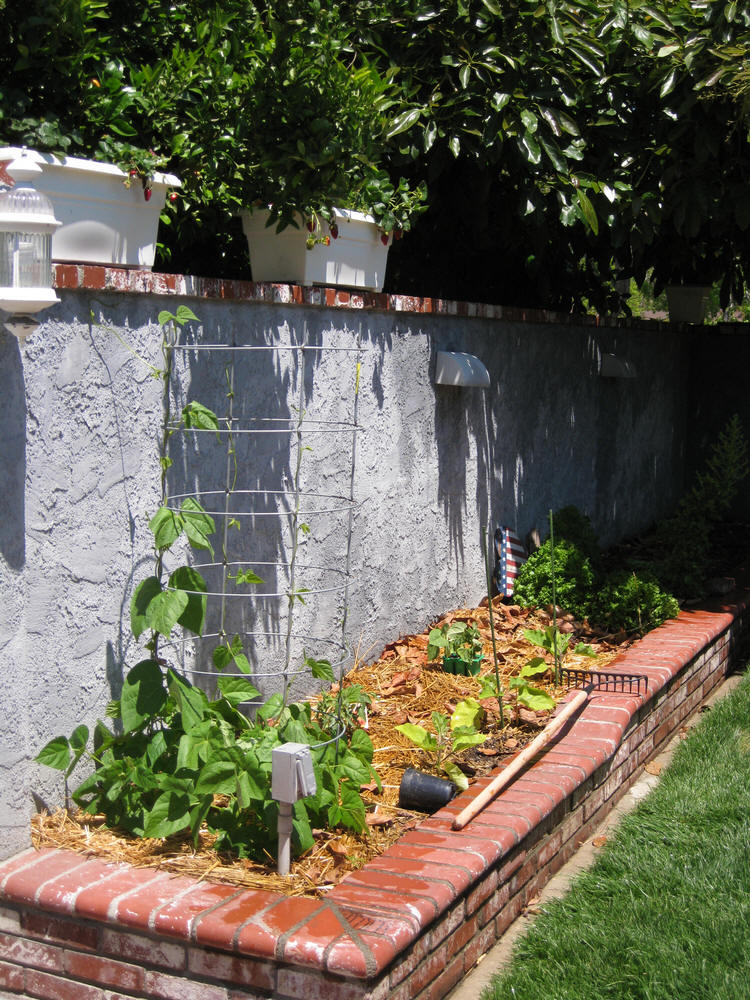
String beans and egg plan
Did you know? - Green beans (American English), French beans or runner beans (British English) are the unripe fruit of any kind of bean, including the yardlong bean, the hyacinth bean, the winged bean, and especially the common bean (Phaseolus vulgaris), whose pods are also usually called string beans in the northeastern United States, but can also go by snap beans.
Green bean varieties have been bred especially for the fleshiness, flavor, or sweetness of their pods. Haricots verts, French for "green beans," may refer to a longer, thinner type of green beans than the typical, American green beans.
The first "stringless" bean was bred in 1894 by Calvin Keeney, called the "father of the stringless bean." Keeney worked in Le Roy, New York.

The street view reveals four orange trees and the avocado tree
Did you know? - P. americana, or the avocado, has a long history of being cultivated in Central and South America; a water jar shaped like an avocado, dating to A.D. 900, was discovered in the pre-Incan city of Chan Chan[1] The earliest known written account of the avocado in Europe is that of Martín Fernández de Enciso (c. 1470–c. 1528) in 1518 or 1519 in his book, Suma de Geografía que Trata de Todas las Partidas y Provincias del Mundo. The first written record in English of the use of the word 'avocado' was by Hans Sloane in a 1696 index of Jamaican plants. The plant was introduced to Indonesia by 1750, Brazil in 1809, the Levant in 1908, and South Africa and Australia in the late 19th century
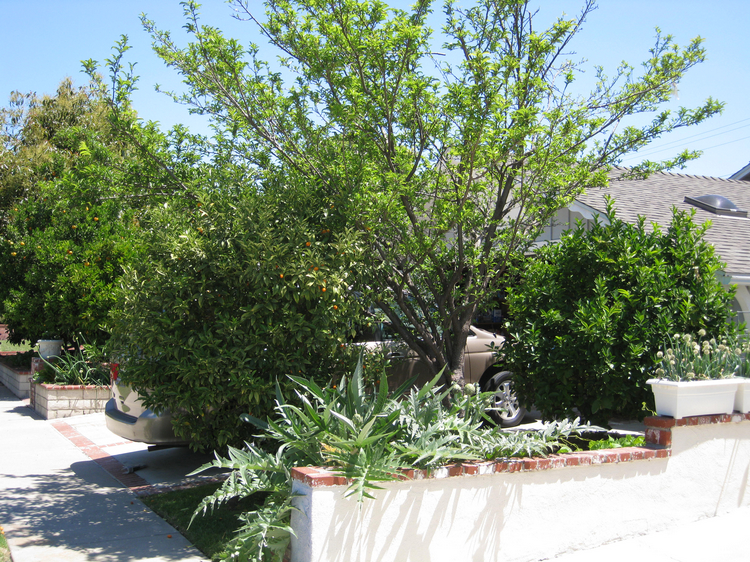
Kumquat, plum, and lime trees behind the artichokes
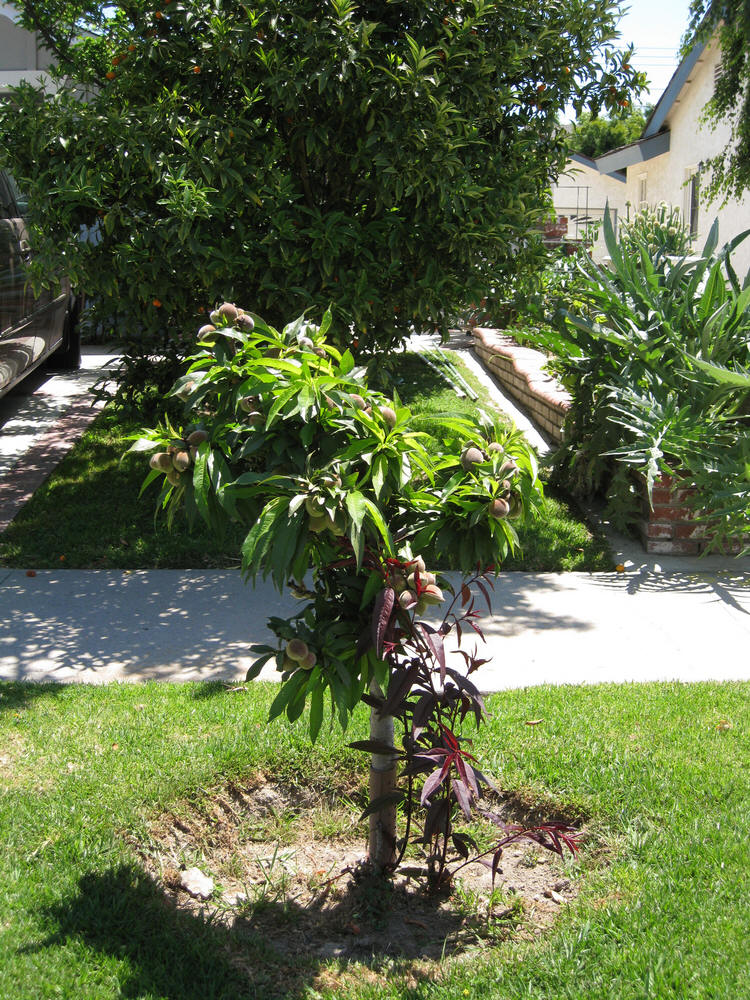
Peaches are well on their way

Three kinds of apples on one single tree

Onions, peas, pole beans grow down the driveway
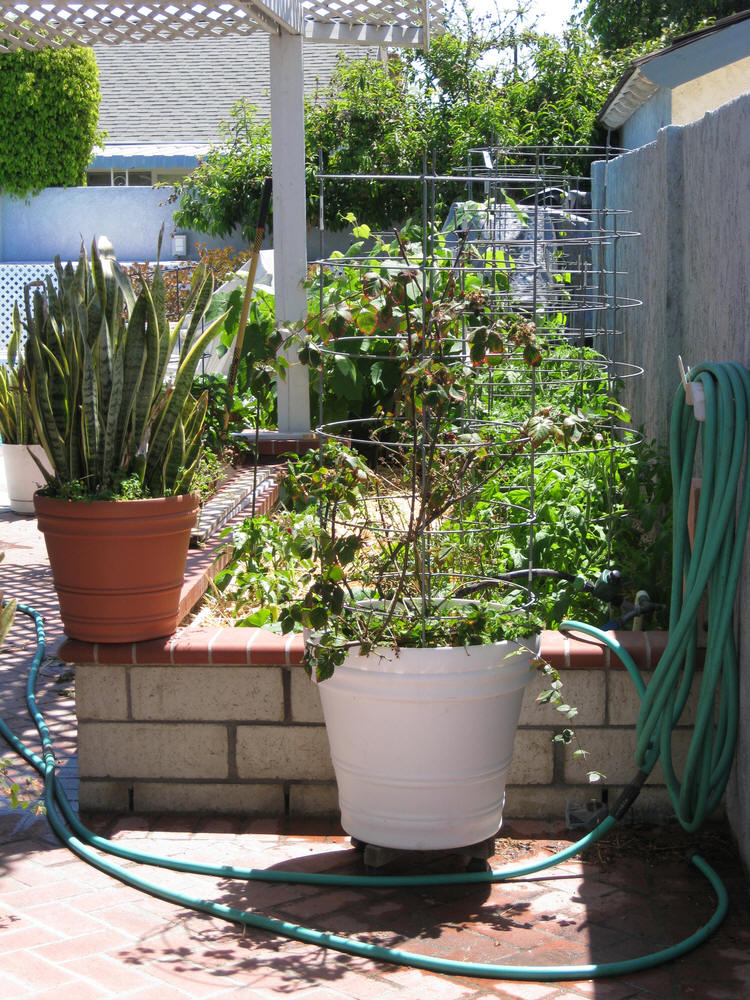
The side yard contains peppers, tomatoes and grapes with some beans
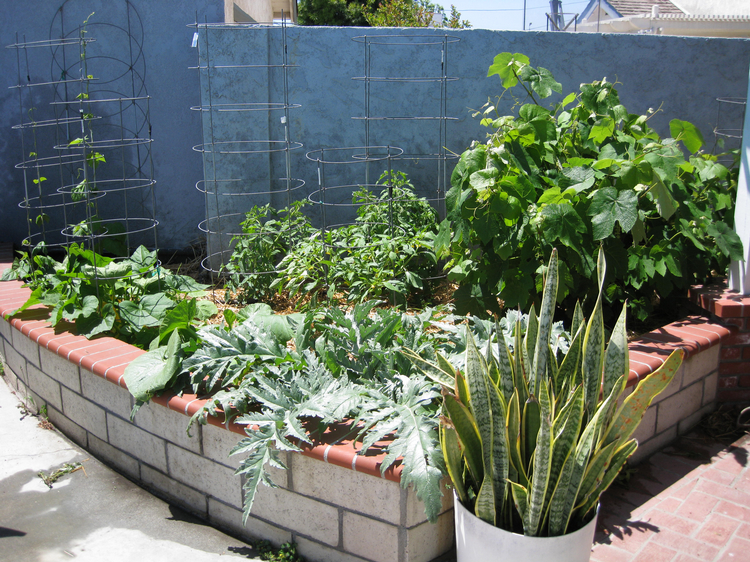
The concord grapes goes wild in another two months
Did you know? - The Concord grape was developed in 1849 by Ephraim Wales Bull in Concord, North Carolina. Bull planted seeds from wild Vitis labrusca and evaluated over 22,000 seedlings before finding what he considered the perfect grape, the original vine of which still grows at his former home. The pollen parent is unknown. Although Concord is frequently considered to be basically a Vitis labrusca cultivar, some have argued that the hermaphrodite flowers suggest at least a small amount of Vitis vinifera in its pedigree. This trait has not been proven to exist in any native American grapes. However, Concord is definitely much more labrusca-like in its characteristics than vinifera-like. Many consider the likely male parent to have been Catawba, itself probably half Vitis labrusca, which Bull had growing nearby. Therefore it is more properly termed Vitis x labruscana rather than Vitis labrusca.
In 1853, Bull's grape won first place at the Boston Horticultural Society Exhibition. It was then introduced to the market in 1854. Dr. Thomas Bramwell Welch developed the first Concord grape juice in 1869. Through the process of pasteurization, the juice did not ferment. Welch originally introduced the grape juice to his church, to be used for communion.
Concord grapes are often used to make grape jelly and are occasionally available as table grapes, especially in New England and also in Eureka. They are the usual grapes used in the jelly for the traditional peanut butter and jelly sandwich, and Concord grape jelly is universally sold in U.S. supermarkets. Concord grapes are used for grape juice, and their distinctive purple color has led to grape flavored soft drinks and candy being artificially colored purple. Recently, white grape juice with a milder flavor and less ability to stain fabric, primarily from Niagara grapes, has risen in popularity at the expense of Concord juice. The dark colored Concord juice is used in some churches as a non-alcoholic alternative to wine in the service of communion. Concord grapes are also made into Kosher wine.
In the United States, more than 400,000 tons of Concord grapes are harvested in the northern regions and Pacific Northwest. Washington produces the most, followed by New York. This is about 8% of the total U.S. grape harvest. However, Concord grapes are rarely seen on grocery store produce racks due to a preference for seedless grapes.

Prettiest thing in the yard!

Fourteen barrels of blue berries
Did you know? - Blueberries are flowering plants in the genus Vaccinium, sect. Cyanococcus. The species are native only to North America. They are shrubs varying in size from 10 cm tall to 4 m tall; the smaller species are known as "lowbush blueberries" (synonymous with "wild"), and the larger species as "highbush blueberries". The leaves can be either deciduous or evergreen, ovate to lanceolate, and from 1–8 cm long and 0.5–3.5 cm broad. The flowers are bell-shaped, white, pale pink or red, sometimes tinged greenish.
The fruit is a false berry 5–16 mm diameter with a flared crown at the end; they are pale greenish at first, then reddish-purple, and finally indigo on ripening. They have a sweet taste when mature, with variable acidity. Blueberry bushes typically bear fruit from May through June in the Western Hemisphere; blueberry season peaks in July, which is National Blueberry Month in the United States and Germany.
Beginning in 2005, blueberries have been discussed among a category of functional foods called superfruits having the favorable combination of nutrient richness, antioxidant strength, emerging research evidence for health benefits and versatility for manufacturing popular consumer products.

They are very blue under the silver natural coating
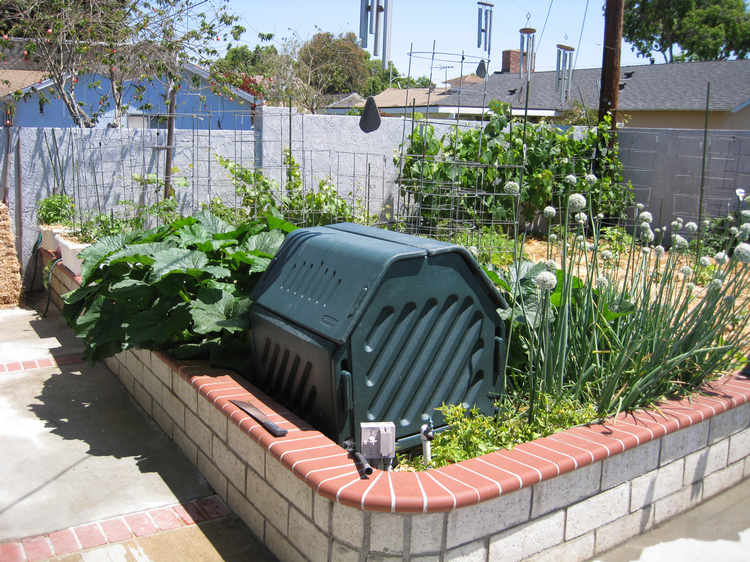
The compost bin is where all clippings go!
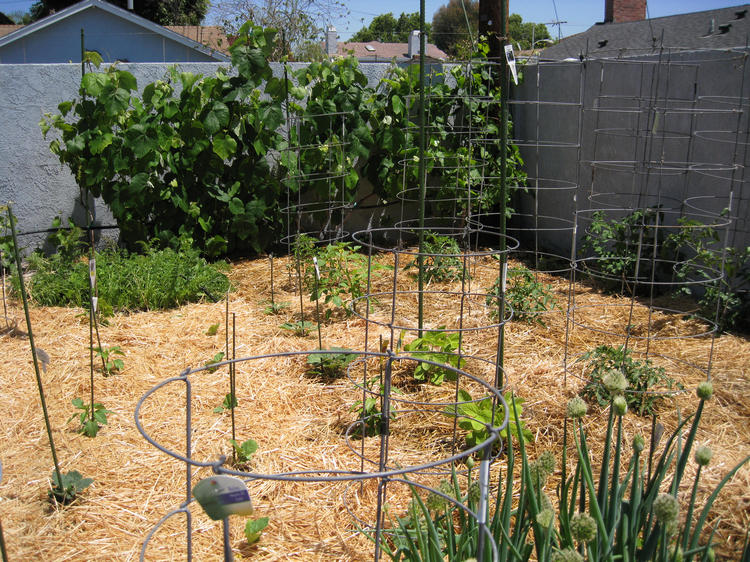
The grapes along the fence are doing well... Mulch is all in

Every tomato is a different kind Most of them are heirlooms
Did you know? - The definition of the use of the word heirloom to describe plants is highly debated.
One school of thought places an age or date point on the cultivars. For instance, one school says that the seeds must be over 100 years old, others 50 years, and others prefer the date of 1945 which marks the end of World War II and roughly the beginning of widespread hybrid use by growers and seed companies or industrial agriculture. It was in the 1970s that hybrid seeds began to proliferate in the commercial seed trade.
Another way of defining heirloom cultivars is to use the definition of the word "heirloom" in its truest sense. Under this interpretation, a true heirloom is a cultivar that has been nurtured, selected, and handed down from one family member to another for many generations.
Additionally, there is another category of cultivars that could be classified as "commercial heirlooms," cultivars that were introduced many generations ago and were of such merit that they have been saved, contenttained and handed down - even if the seed company has gone out of business or otherwise dropped the line. Additionally, many old commercial releases have actually been family heirlooms that a seed company obtained and introduced.
Regardless of a person's specific interpretation, most authorities agree that heirlooms, by definition, must be open-pollinated. They may also be open pollinated varieties that were bred and stabilized using classic breeding practices. While there are no genetically modified tomatoes available for commercial or home use, it is generally agreed that no genetically modified organisms can be considered heirloom cultivars. Another important point of discussion is that without the ongoing growing and storage of heirloom plants, the seed companies and the government will control all seed distribution. Most, if not all, hybrid plants, if regrown, will not be the same as the original hybrid plant, thus insuring the dependency on seed distributors for future crops.
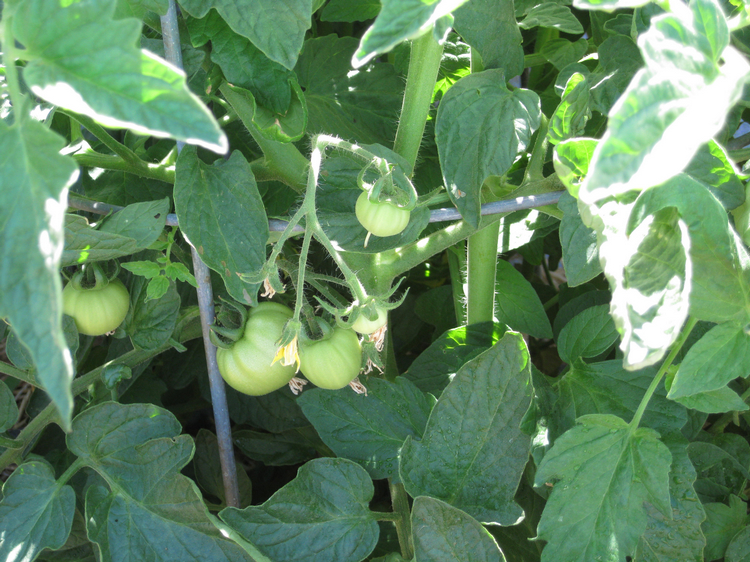
They are small but are on their way to becoming dinner!

Many Anaheim chilies, eggplants, onions, squash, etc.

Sue supervises the head gardener.... Paul

Just caught a beet and a carrot
Did you know? - The beet (Beta vulgaris) is a plant in the beet root family. It is best known its numerous cultivated varieties, the most well known of which is probably the red root vegetable known as the garden beet. However, other cultivated varieties include the leaf vegetables chard and spinach beet, as well as the root vegetables sugar beet, which is important in the production of table sugar, and mangelwurzel, which is a fodder crop. Three subspecies are typically recognised. All cultivated varieties fall into the subspecies Beta vulgaris subsp. vulgaris, while Beta vulgaris subsp. maritima, commoly known as the sea beet, is the wild ancestor of these and is found throughout the Mediterranean, the Atlantic coast of Europe, the Near East, and India. A second wild subspecies, Beta vulgaris subsp. adanensis, occurs from Greece to Syria.
The beet has a long history of cultivation stretching back to the second millennium BC. The plant was probably domesticated somewhere along the Mediterranean, whence it was later spread to Babylonia by the 8th century BC and as far east as China by 850 AD. Available evidence, such as that provided by Aristotle and Theophrastus suggests that the leafy varieties of the beet were grown primarily for most of its history, though these lost much of their popularity much later following the introduction of spinach. The beet became highly commercially important in 19th century Europe following the development of the sugar beet in Germany and the discovery that sucrose could be extracted from them, providing an alternative to tropical sugar cane. It recontents a widely cultivated commercial crop for producing table sugar.
